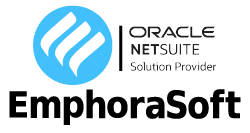Custom vs. Off-the-Shelf ERP: Making the Right Choice for Your Business
Enterprise Resource Planning (ERP) systems have become the backbone of modern businesses, helping organizations integrate various functions into a unified system. However, when it comes to selecting an ERP solution, business leaders often find themselves at a crossroads: should they invest in a custom-built ERP system tailored to their specific needs, or opt for an off-the-shelf solution that promises quick implementation?
This decision is far from trivial. Your choice between custom and off-the-shelf ERP will impact your organization’s operations, budget, and growth potential for years to come. With the global ERP market projected to reach $93.34 billion by 2028, according to recent industry reports, understanding the nuances of each option has never been more important.
At Emphorasoft, we’ve guided countless businesses through this critical decision-making process. This comprehensive guide will walk you through the key considerations, advantages, and limitations of both custom and off-the-shelf ERP solutions, equipping you with the knowledge to make the choice that best aligns with your business objectives.
Understanding ERP Systems: The Basics
Before diving into the comparison, let’s establish a clear understanding of what an ERP system actually is. Enterprise Resource Planning software integrates core business processes—such as finance, HR, manufacturing, supply chain, services, procurement, and others—into a single system. This integration enables the smooth flow of data between various business functions and improves data reliability with a single source of truth.
Modern ERP systems typically include the following components:
- Financial management: Accounting, budgeting, and financial reporting
- Supply chain management: Inventory, purchasing, and supplier relationships
- Human resources: Employee data, payroll, and talent management
- Customer relationship management: Sales, marketing, and customer service
- Manufacturing: Production planning, scheduling, and execution
- Business intelligence: Reporting, analytics, and decision support
The right ERP system can transform your business operations by eliminating data silos, automating routine tasks, enhancing visibility across departments, and providing actionable insights for strategic decision-making. However, the key phrase here is “the right ERP system”—and that’s where the custom versus off-the-shelf debate begins.
Off-the-Shelf ERP Solutions: The Ready-Made Approach
Off-the-shelf (or packaged) ERP solutions are pre-built software packages designed to meet the general needs of businesses across various industries. These solutions come with standard features and functionalities that cater to common business processes.
Advantages of Off-the-Shelf ERP
1. Faster Implementation
One of the most significant advantages of off-the-shelf ERP solutions is their relatively quick implementation timeline. Since the software is already developed, tested, and ready to use, businesses can deploy it much faster than a custom solution.
For small to medium-sized businesses with straightforward processes, implementation can take anywhere from 3-6 months, compared to the 12+ months often required for custom development. This rapid deployment means you can start realizing benefits sooner, potentially accelerating your return on investment.
2. Lower Initial Investment
Off-the-shelf solutions typically require a lower upfront investment compared to custom development. The development costs are distributed across all customers, making the initial price point more accessible, especially for small and medium-sized businesses with limited IT budgets.
Many off-the-shelf ERP providers also offer subscription-based pricing models, allowing businesses to treat the expense as an operational cost rather than a capital investment. This can be particularly advantageous for companies looking to preserve cash flow and minimize financial risk.
3. Proven Reliability and Established Support
Market-leading off-the-shelf ERP solutions have been implemented across thousands of businesses and refined over years or even decades. This widespread usage means that most bugs and issues have been identified and resolved, resulting in a stable, reliable system.
Furthermore, established ERP vendors typically offer comprehensive support services, including:
- Regular updates and patches
- Technical support hotlines
- Extensive documentation
- User training programs
- Active user communities and forums
These support structures can be invaluable, especially for organizations with limited in-house IT expertise.
4. Industry Best Practices Built-In
Leading off-the-shelf ERP vendors invest heavily in research and incorporate industry best practices into their solutions. By implementing these systems, businesses can adopt standardized processes that have proven effective across their industry.
For example, a manufacturing business implementing an industry-specific ERP might benefit from optimized production scheduling methodologies developed based on data from hundreds of similar companies. This can be particularly valuable for growing businesses looking to establish more mature operational processes.
5. Regular Updates and Innovation
Established ERP vendors continuously enhance their products, incorporating new technologies and features to remain competitive. When you choose an off-the-shelf solution, you benefit from this ongoing development without having to invest additional resources in keeping your system technologically current.
In recent years, many ERP vendors have integrated cutting-edge technologies such as artificial intelligence, machine learning, and advanced analytics into their platforms. These innovations can provide significant competitive advantages that might be prohibitively expensive to develop in a custom solution.
Limitations of Off-the-Shelf ERP
1. Limited Customization
While most off-the-shelf ERP systems offer some degree of configuration, there are inherent limitations to how much you can tailor the software to your specific needs. If your business has highly specialized processes or unique requirements, you might find yourself adapting your operations to fit the software rather than the other way around.
This can be particularly challenging for businesses in niche industries or those with differentiated operational models that serve as competitive advantages. In these cases, conforming to standardized processes might diminish rather than enhance your business performance.
2. Potential Feature Bloat
Off-the-shelf ERP systems are designed to cater to a wide range of businesses, which means they often include features and functionalities that your organization may never use. This feature bloat can make the system more complex than necessary, potentially complicating user adoption and daily operations.
Employees may need to navigate through irrelevant features to perform their tasks, which can reduce efficiency and increase training requirements. Additionally, unused features still consume system resources and can impact performance.
3. Integration Challenges
While modern off-the-shelf ERP systems typically offer integration capabilities, connecting them with specialized third-party applications or legacy systems can sometimes be challenging. If your business relies heavily on specific tools or software that must work seamlessly with your ERP, integration limitations could pose significant obstacles.
These integration challenges can lead to manual workarounds, data synchronization issues, or even the need for custom development work—potentially undermining some of the cost and time benefits of choosing an off-the-shelf solution in the first place.
4. Subscription Costs Add Up
Although the initial investment for an off-the-shelf ERP is typically lower than custom development, the long-term costs can accumulate significantly, especially with subscription-based pricing models. Over a 5-10 year period, the total cost of ownership might actually exceed that of a custom solution, particularly if you’re paying for features and capacity you don’t fully utilize.
Additionally, as your business grows, you may face higher subscription costs based on increased users, transactions, or data storage requirements. These escalating costs can impact your budgeting and financial planning.
Custom ERP Solutions: Tailored to Your Business
Custom ERP development involves building a solution from the ground up or significantly modifying an existing platform to precisely match your organization’s specific requirements, workflows, and objectives.
Advantages of Custom ERP
1. Perfect Alignment with Business Processes
The most compelling advantage of custom ERP development is the ability to create a system that perfectly mirrors your unique business processes and requirements. Instead of adapting your operations to fit standardized software, you can design the system to support your specific workflows—even those that give you a competitive edge.
This perfect alignment means employees work with a system that feels intuitive because it’s built around their existing processes. The result is typically higher user adoption rates, improved efficiency, and reduced training requirements compared to implementing an off-the-shelf solution that forces operational changes.
2. Scalability and Flexibility
Custom ERP solutions can be designed with your company’s growth trajectory in mind, allowing for seamless scalability as your business expands. You can prioritize building out features that are immediately necessary while establishing a foundation that supports future additions without major overhauls.
This flexibility extends to adapting to changing market conditions or business models. If your industry experiences disruption or your company pivots its strategy, a custom ERP can be modified accordingly without the constraints imposed by packaged software.
3. Competitive Advantage Through Unique Functionality
For businesses operating in highly competitive markets, unique operational processes can represent a significant competitive advantage. A custom ERP solution can preserve and enhance these differentiators rather than forcing standardization.
For example, a distribution company with a proprietary algorithm for inventory optimization can incorporate this directly into their custom ERP, preserving the operational edge that sets them apart from competitors using standard inventory management processes in off-the-shelf solutions.
4. Seamless Integration with Existing Systems
Custom ERP development allows for precise integration with your existing software ecosystem, whether that includes proprietary applications, specialized industry tools, or legacy systems that cannot be easily replaced. These integrations can be built exactly to your specifications, eliminating the data silos that often persist with off-the-shelf implementations.
For businesses with complex IT landscapes or substantial investments in proprietary technology, this seamless integration capability can be crucial for maintaining operational continuity while modernizing core systems.
5. Full Control Over Data and Security
With a custom ERP solution, your organization maintains complete control over your data, including where it’s stored, how it’s processed, and who has access. This can be particularly valuable for businesses in highly regulated industries with specific compliance requirements or those handling sensitive information.
Custom development also allows you to implement security measures tailored to your specific risk profile and internal policies, rather than relying on the standardized security features of packaged software.
Limitations of Custom ERP
1. Higher Initial Investment
Custom ERP development typically requires a significant upfront investment. Depending on the complexity of your requirements, development costs can range from hundreds of thousands to millions of dollars. This high initial outlay can be prohibitive for small and medium-sized businesses with limited capital.
Beyond the development costs, you should also account for expenses related to requirements gathering, project management, quality assurance, and user training—all of which tend to be more intensive for custom projects compared to implementing packaged solutions.
2. Longer Implementation Timeline
Building a custom ERP system from scratch is a time-intensive process. A comprehensive custom ERP project can take anywhere from 1-3 years from initial planning to full deployment, depending on the scope and complexity. This extended timeline means a longer wait before you start realizing benefits from your investment.
The phased nature of custom development also means that your organization must maintain existing systems and processes for a longer period, potentially delaying operational improvements and competitive advantages.
3. Ongoing Maintenance Responsibility
With a custom ERP solution, your organization bears the responsibility for ongoing maintenance, updates, and troubleshooting. This typically requires dedicated IT resources with specialized knowledge of your system, which can be both expensive and challenging to staff appropriately.
If the original developers or key IT team members leave your organization, knowledge transfer becomes critical to ensure continuity of support. Without proper documentation and transition planning, you risk creating a situation where future modifications or problem resolutions become increasingly difficult.
4. Risk of Obsolescence
Technology evolves rapidly, and custom solutions can become technologically outdated if not continuously updated and enhanced. Unlike off-the-shelf products that benefit from vendor-driven innovation, keeping a custom ERP current requires dedicated investment and initiative from your organization.
Failing to keep pace with technological advancements could eventually lead to a situation where your custom system becomes a liability rather than an asset, potentially necessitating a costly replacement project sooner than anticipated.
Key Factors to Consider When Making Your Decision
Now that we’ve explored the advantages and limitations of both approaches, let’s examine the key factors that should influence your decision between custom and off-the-shelf ERP solutions.
1. Business Size and Complexity
The size and operational complexity of your organization significantly impact which approach is most appropriate:
- Small Businesses (1-50 employees): Off-the-shelf solutions are typically more suitable due to budget constraints and relatively straightforward processes. Cloud-based ERP solutions designed for small businesses often provide sufficient functionality without the need for extensive customization.
- Medium-Sized Businesses (50-500 employees): These organizations often find themselves at the inflection point in the custom vs. off-the-shelf decision. The choice largely depends on industry-specific requirements, growth projections, and the presence of unique operational processes that provide competitive advantages.
- Large Enterprises (500+ employees): Larger organizations with complex, multi-entity operations might benefit from custom ERP development, especially if they operate in niche industries or have highly specialized processes. However, many enterprises still opt for tier-one off-the-shelf solutions with significant customization and configuration.
2. Industry-Specific Requirements
Some industries have highly specialized requirements that may not be adequately addressed by general-purpose ERP solutions:
- Manufacturing: Process manufacturing, discrete manufacturing, and mixed-mode manufacturing each have unique needs related to formulation, production scheduling, quality control, and compliance.
- Healthcare: Patient data management, regulatory compliance (HIPAA), billing complexities, and integration with medical devices create specialized ERP requirements.
- Financial Services: Stringent regulatory requirements, complex transaction processing, and specialized reporting needs may necessitate significant customization.
- Retail and E-commerce: Inventory management across multiple channels, point-of-sale integration, and consumer-facing features create unique ERP demands.
If you operate in an industry with highly specific requirements, evaluate whether off-the-shelf options include industry-specific versions or modules before assuming custom development is necessary. Many ERP vendors now offer dedicated industry solutions that might meet your needs without full customization.
3. Budget and Total Cost of Ownership
Financial considerations extend beyond the initial implementation costs:
- Initial Investment: Custom development typically requires a larger upfront capital expenditure, while off-the-shelf solutions often offer subscription-based models with lower initial costs but ongoing payments.
- Total Cost of Ownership (TCO): Calculate the projected costs over a 5-10 year period, including licensing/subscription fees, implementation, customization, integration, training, maintenance, upgrades, and internal resource requirements.
- ROI Timeline: Consider how quickly you need to realize returns on your ERP investment. Off-the-shelf solutions typically offer faster implementation and quicker initial benefits, while custom solutions may provide greater long-term value but with delayed returns.
4. Timeline and Resource Availability
Implementation timeline considerations include:
- Urgency: If you need to replace legacy systems quickly due to obsolescence or compliance issues, off-the-shelf solutions offer faster deployment.
- Resource Availability: Custom development requires significant involvement from your internal subject matter experts throughout the process. Consider whether your team has the bandwidth to participate in an extended development project without impacting daily operations.
- Phased Approach: Some organizations opt for a hybrid approach, implementing an off-the-shelf solution for immediate needs while gradually developing custom components for areas requiring specialized functionality.
5. Future Growth and Scalability
Consider your long-term business strategy and growth projections:
- Business Expansion: If you anticipate significant growth, international expansion, or diversification into new product/service lines, evaluate how each ERP option would accommodate these changes.
- Acquisition Strategy: Companies that grow through acquisitions may need flexible systems that can incorporate new entities with different operational models.
- Emerging Technologies: Consider how each option positions your organization to leverage emerging technologies like artificial intelligence, machine learning, IoT, and blockchain in the future.
The Middle Ground: Configurable ERP Platforms
The ERP market has evolved considerably in recent years, and the choice between custom and off-the-shelf is no longer strictly binary. Many vendors now offer highly configurable platforms that represent a middle ground between completely custom development and rigid packaged applications.
These configurable platforms provide:
- Core Functionality: Standard modules for common business functions like finance, inventory, purchasing, and CRM.
- Configuration Options: Extensive settings and parameters that allow you to tailor the system to your needs without coding.
- Development Frameworks: Low-code or no-code tools that enable the creation of custom functionality without building from scratch.
- API Ecosystems: Robust integration capabilities and marketplaces of pre-built connectors to other business applications.
- Industry Solutions: Pre-configured versions tailored to specific industry requirements.
This hybrid approach often delivers the best of both worlds: the reliability and cost-efficiency of packaged software combined with the flexibility to accommodate your unique requirements. For many mid-sized businesses, these configurable platforms represent the optimal solution.
ERP Selection Process: A Structured Approach
Regardless of which direction you’re leaning, a structured selection process is essential for making the right choice:
1. Requirements Gathering
Begin by documenting your current business processes and identifying pain points, inefficiencies, and areas for improvement. Involve stakeholders from all departments to ensure comprehensive understanding of cross-functional needs.
Create a prioritized list of requirements, distinguishing between “must-have” and “nice-to-have” features. Be specific about your unique processes that provide competitive advantages and cannot be compromised.
2. Market Research and Vendor Evaluation
For off-the-shelf options, research vendors with solutions appropriate for your industry and business size. Request demonstrations focused on your specific requirements rather than generic presentations.
For custom development, evaluate potential development partners based on their experience with similar projects, technical expertise, and methodology. Request case studies and references from clients with similar requirements.
3. Proof of Concept
Before making a final decision, consider implementing a proof of concept for the most critical or unique aspects of your requirements. This helps validate that either the off-the-shelf solution can be configured to meet your needs or that the custom approach is feasible within your constraints.
4. Implementation Planning
Develop a detailed implementation plan that includes:
- Phasing strategy (which modules or functions to implement first)
- Data migration approach
- Integration requirements
- User training program
- Change management strategy
5. ROI Analysis
Calculate the expected return on investment for each option under consideration. Include both tangible benefits (cost savings, productivity improvements) and intangible benefits (improved decision-making, customer satisfaction, competitive advantage).
Case Studies: Real-World ERP Decisions
To illustrate how these considerations play out in practice, let’s examine how different organizations approached the custom vs. off-the-shelf decision:
Manufacturing Company: The Hybrid Approach
A mid-sized manufacturing company with 250 employees needed to replace their legacy ERP system. They had several unique production scheduling requirements due to their specialized equipment and variable production processes.
Decision: They selected an industry-specific off-the-shelf ERP solution for standard functions like accounting, inventory, and CRM, but invested in custom development for their production scheduling module.
Outcome: This hybrid approach allowed them to implement quickly in most areas while preserving their competitive advantage in production efficiency. The total implementation time was reduced by 40% compared to a fully custom solution, while still addressing their most critical specialized needs.
E-commerce Startup: Off-the-Shelf Solution
A rapidly growing e-commerce company with 30 employees needed an ERP system to replace their patchwork of spreadsheets and basic accounting software.
Decision: They selected a cloud-based off-the-shelf ERP solution designed specifically for e-commerce businesses, with pre-built integrations to their shopping cart platform and shipping providers.
Outcome: The implementation was completed in just 12 weeks, allowing them to scale operations efficiently during a period of 300% growth. The subscription model preserved cash flow for inventory and marketing investments. As they’ve grown, they’ve added modules from the vendor’s ecosystem rather than developing custom solutions.
Financial Services Firm: Custom Development
A specialized financial services firm with strict regulatory requirements and proprietary trading algorithms needed an ERP solution that could integrate seamlessly with their existing trading platform.
Decision: After evaluating several off-the-shelf options, they determined that none could adequately support their specialized processes without significant compromises. They proceeded with custom ERP development.
Outcome: While the implementation took 18 months and required significant investment, the resulting system provided a seamless experience across all operations and preserved their proprietary trading approaches. The firm estimates that the customized workflow has provided a 15% efficiency advantage over competitors using standardized systems.
Conclusion: There’s No One-Size-Fits-All Answer
The decision between custom and off-the-shelf ERP solutions is complex and multifaceted. There’s no universal right answer that applies to all organizations. The optimal choice depends on your specific business needs, resources, growth trajectory, and competitive landscape.
FAQ's
Custom ERP is built or tailored specifically to match your unique business processes and competitive advantages, while off-the-shelf ERP comes as a pre-built package designed to serve common industry needs with standard features.
Off-the-shelf solutions typically allow for faster implementation (often within 3-6 months), require a lower initial investment via subscription models, come with proven reliability and comprehensive support, and incorporate industry best practices with regular updates.
They often provide limited customization, which may force your business to adapt its processes to the software. Other issues include potential feature bloat, integration challenges with third-party or legacy systems, and subscription costs that can add up over time.
A custom ERP is designed to align perfectly with your specific workflows, can scale precisely with your business growth, preserve unique competitive processes, integrate seamlessly with existing systems, and provide full control over data and security protocols.
Custom ERP development usually involves a higher upfront investment, a longer implementation timeline (often 1-3 years), and the ongoing responsibility of maintenance and updates. There’s also the risk of the system becoming outdated if continuous improvements aren’t made.
Key factors include your organization’s size and complexity, industry-specific requirements, budget constraints and total cost of ownership over time, required implementation timeline, and your long-term growth strategy.
For many medium-sized businesses, configurable ERP platforms offer a middle ground—providing standard modules with extensive configuration options, low-code tools, and pre-built integrations—thus delivering the cost-efficiency of off-the-shelf solutions with some of the flexibility of custom development.
8. How does the implementation timeline influence the decision between custom and off-the-shelf ERP?
If immediate replacement of legacy systems or rapid deployment is critical, off-the-shelf ERP systems typically have an advantage due to their shorter deployment time. In contrast, custom solutions require a longer development period, delaying the time to realize benefits.
Accord
If your organization relies on multiple legacy systems or specialized third-party applications, a custom ERP can be designed for seamless integration. However, many off-the-shelf solutions now also offer robust integration capabilities—though they might require additional customization or middleware in more complex scenarios.
ion Content
Your ERP should support your long-term growth and be flexible enough to adopt emerging technologies (such as AI, IoT, or blockchain). A custom ERP can be developed with your future roadmap in mind, while modern off-the-shelf platforms often offer upgrade paths and integration with innovative tools via APIs and add-on modules.






